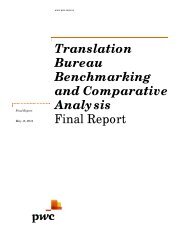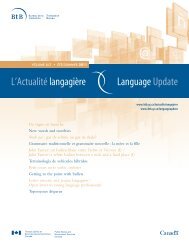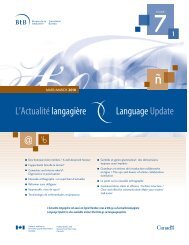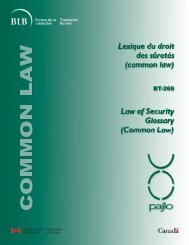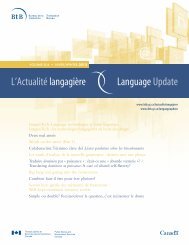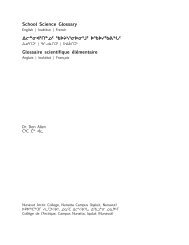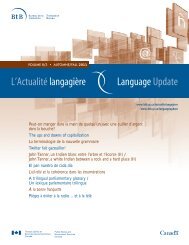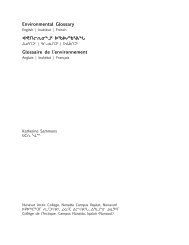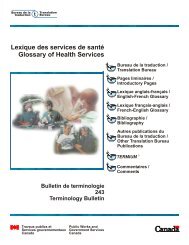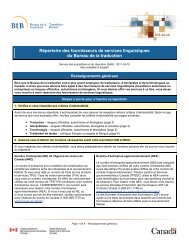Glossaire d'archéologie / Archaeology Glossary - Bureau de la ...
Glossaire d'archéologie / Archaeology Glossary - Bureau de la ...
Glossaire d'archéologie / Archaeology Glossary - Bureau de la ...
Create successful ePaper yourself
Turn your PDF publications into a flip-book with our unique Google optimized e-Paper software.
Prince of Wales Northern Heritage Centre: ᐃᑦᑕᕐᓂᓴᖃᕐᕕᐅᓪᓗᓂ ᑕᑯᔭᒐᖃᕐᕕᒃ<br />
ᔭᓗᓇᐃᕝᒥᑦ: Ittarnisaqarviulluni takujagaqarvik Yellowknife-mit: Centre du<br />
patrimoine septentrional du Prince <strong>de</strong> Galles (CPSPG)<br />
Q<br />
The Prince of Wales Northern Heritage Centre is located in Yellowknife, and is the<br />
primary repository for the curation and disp<strong>la</strong>y of archaeological specimens in the<br />
Northwest Territories.<br />
Qamutik C<strong>la</strong>sp: ᓴᓐᓂᕆᐊᖅ: Sanniriaq: Pièce d’attache <strong>de</strong>s traits<br />
A bone or ivory c<strong>la</strong>sp used to connect the ends of the thong to which the dogs<br />
are connected to the qamutiq.<br />
Quarry: ᐅᔭᕋᒃᑕᕐᕕᒃ: Ujaraktarvik: Carrière<br />
A location from which stone is extracted for the manufacture of tools and weapons.<br />
Prehistoric soapstone and chert quarries are found in Nunavut.<br />
Quartz: ᐊᓕᒍᖅ: Aliguq: Quartz<br />
A type of hard, clear, g<strong>la</strong>ssy rock formed of essentially pure silicon dioxi<strong>de</strong> (SiO2).<br />
Quartz forms prismatic crystals that were often used as raw material for the<br />
manufacture of stone tools.<br />
Quartzite: ᑐᓐᓅᔭᖅ: Tunnuujaq: Quartzite<br />
R<br />
A type of rock consisting of metamorphosed (transformed by heat and pressure)<br />
sandstone. Quartzite was used as a raw material for stone tool manufacture,<br />
although it is more difficult to work than other types of stone and often yields<br />
cru<strong>de</strong>-looking tools.<br />
Radiocarbon Year: ᐊᕐᔭᓂᒃᑯᑦ ᐊᕐᕌᒍᓯᐊᖅᑕᐅᔪᖅ: Arjanikkut arraagusiaqtaujuq:<br />
Année(s) radiocarbone<br />
A unit of e<strong>la</strong>psed time based on the rate of <strong>de</strong>cay of radioactive carbon. Dates<br />
obtained on archaeological materials using the Carbon-14 method are in<br />
radiocarbon years, which are not exactly the same as calendar years. As a result,<br />
radiocarbon dates must be converted or “calibrated” into calendar years. See<br />
Calibrated Date.<br />
32



